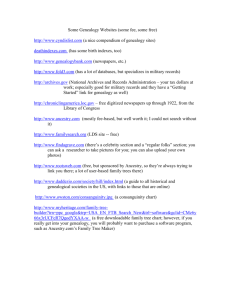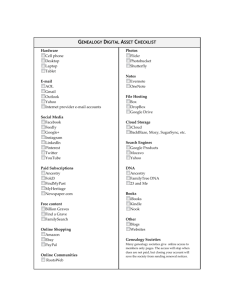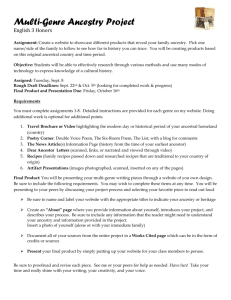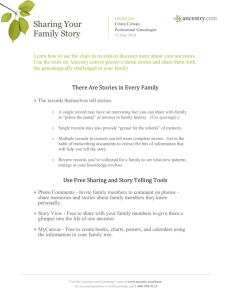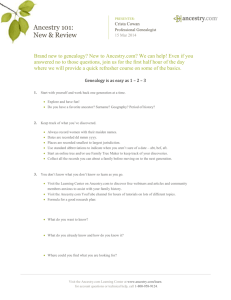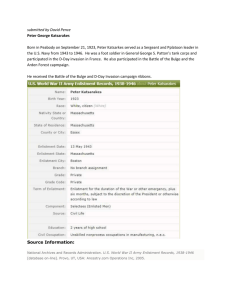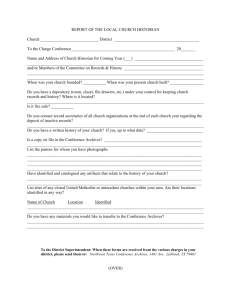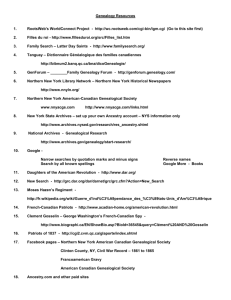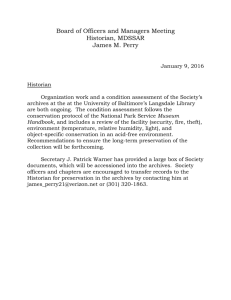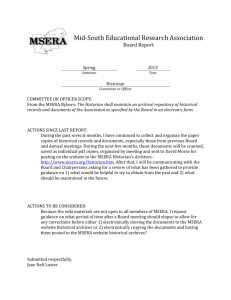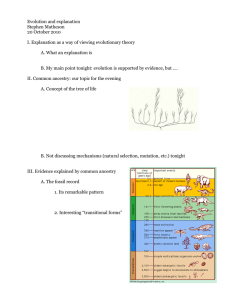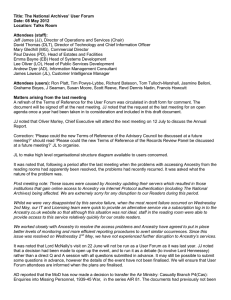http://www.babyboomers.com www.factmonster.com/yearbyyear
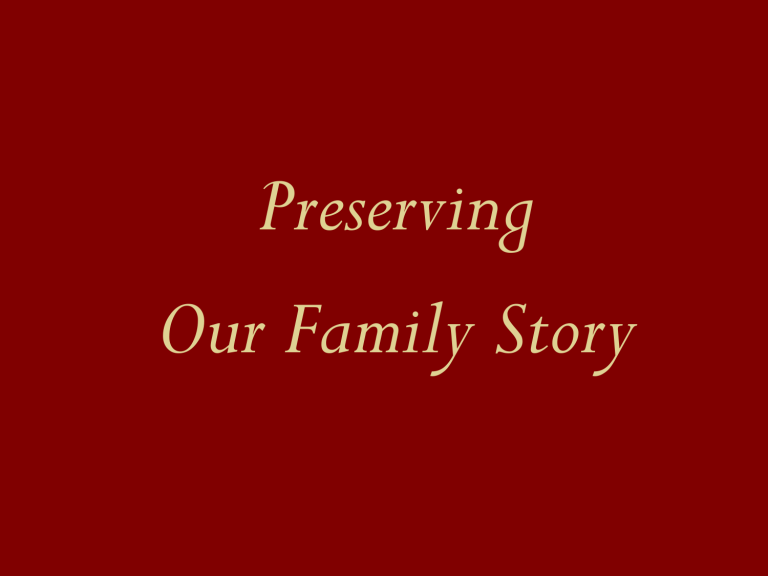
Preserving
Our Family Story
“Bird by Bird”
Important Questions
• Why is doing this important to me?
• Who am I creating this history for?
• How MUCH do I want to try to cover in this project?
• What end product am I working toward?
Getting Organized
• What do I have to work with?
• Where is it now?
• How can I best organize it to pull it together.
• Where will I keep it?
So where do I start?
• Start with what your oldest family members know
• Family papers, Bibles, tombstones
• Bits of information you remember
• Locate people so you know which states and counties to search.
• Keep an eye out for the stories you’ve never heard.
• “Beyond this place there be dragons.”
Early Maps of the World
Enjoy your discoveries
…and don’t run too fast!
• What information do I need to find?
• Where I find might have details or pictures I don’t have?
• Where can I hunt for facts we’re missing?
You can be a genealogist without being a family historian…
…but, it’s hard to be a family historian without becoming involved in genealogical research.
Digging into the Past
• Federal Census forms 1940 to 1790.
• Court Records- Deeds, Wills, suits
• Birth, Death, Marriage & baptisms
• Newspapers and periodicals.
• Local histories, Genealogy Societies and county historical societies.
• Who keeps these records?
–National Archives
–County Courthouses
–State Archives/Libraries
–Churches and local societies
Important Reminder!
• Print copies where possible
•
Always note source
• Notations for which person/generation
Ancestry.com
1890 Census destroyed in fire
Those Without Names
• No slaves named.
• No married women’s names before 1850.
What do I do with THIS?
• Keep Notes on related people.
• Keep note of “maybe this is us?” finds.
• Shoebox on Ancestry.
• Paste text and source into Word.
• Print and place in notebook.
Bringing Dry Bones to Life
• Filling in historical context, timeperiods, national and local events in those ancestor’s lifetimes.
• Read local history- and good historical fiction.
• Year event sites, books.
Online Resources
•
Library of Congress
•
National Archives
•
Public Library (Louisa)
•
Library of Virginia
•
Bob's Genealogy Filing Cabinet
•
Ancestry.com
•
Fold3.com
URLs for websites
• http://www.loc.gov
• http://www.archives.gov
• www.jmrl.org
• http://www.lva.lib.va.us
• http://www.genfiles.com
• www.ancestry.com
• www.footnote.com
• Although this is family “history”, you want it to read like a story, not a textbook.
• When what you know is true, state it as fact.
• When you don’t know, make free use of,
“I imagine,” or “One can only guess that like other early Tennessee pioneers…..”
“Conflicting accounts are told, but it seems….”
Focus and Limits
• Your story – for your children.
• Focus on one early ancestor and come forward in time.
• Begin with someone living and go back a few generations.
Plots, Themes or Quotes
• Immigration/Migration
• Rags to Riches
• Pioneer or Farm Life
• Rising Out of Slavery
• War Survival
• Quotes- literary or from letters
The Key Component to
Success…
Your passion for what you’re writing about.
Format Options
• Scrapbook (only good for a few copies)
• Copy and/or Print your
‘scrapbook’
• Create your own pages for print.
• Scan photos and background papers and textures.
• Be creative!
Scan or photograph anything.
Essentials for the Task
• A scanner and computer
• Digital camera with close-up
• A little creativity or a young person close at hand!
A Sensory Exercise
As you watch jot down a name, place or memory that comes to mind.
Think how you can best engage your family member’s interest and involve them in the process!
• On YouTube?
Let your heart bring
the story
…
…and welcome
the story that comes.
